SUMMARY
This is AI generated summarization, which may have errors. For context, always refer to the full article.
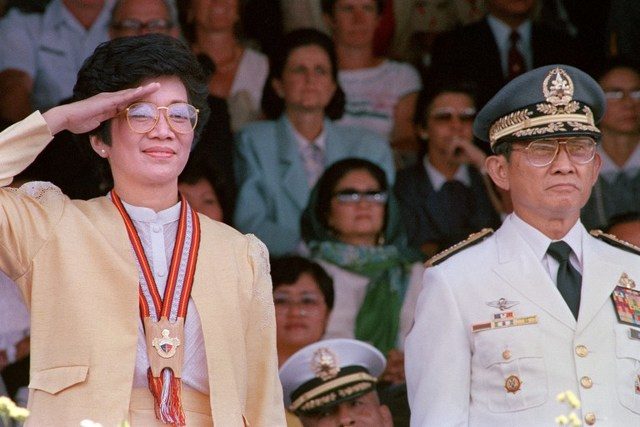
AT A GLANCE:
- Every post-Marcos president has had quarrels with Malacañang reporters
- There were various levels of restriction imposed on reporters in different administrations
- President Rodrigo Duterte’s ban on Rappler is the most extreme so far in terms of scope
MANILA, Philippines – Anyone’s experience of Malacañang begins with a pair of towering metal gates guarded by rifle-wielding, tight-lipped soldiers.
If one is lucky enough to secure passage, the gates open to reveal a dazzlingly green lawn stretched out beside a driveway that curves around an immense balete tree, ultimate guardian of the Palace’s main entrance.
Access to Malacañang, residence and office of the Philippine president, has always been granted to a select few, given the need to protect the head of state and the dignity of the presidency.
Among those select few given access to the Palace are reporters accredited by government to cover the president. Such access is given in recognition of the fact that, as the highest elected official, the president, and everything he or she says and does, are matters of public interest.
For much of the country’s history after the Marcos regime, this has been respected. Despite all the upheavals of various administrations, journalists have been allowed to report from Malacañang itself.
History has also shown that tension between media and Malacañang officials is normal and to be expected. But presidents handled the heat in different ways.
Rappler looks into all the incidents when Malacañang restricted reporters’ access and how these compare to President Rodrigo Duterte’s ban on Rappler.
Corazon Aquino
- “Discrimination” vs local Palace reporters
- Photographer reprimanded
Veteran journalist Joel Paredes, who was Malacañang Press Corps (MPC) president during the Cory Aquino administration, recalled 3 distinct incidents of tension between Malacañang and media practitioners assigned to the Palace beat. (READ: Covering presidents: Life and times of Malacañang Press Corps)
Within the first year of Aquino’s presidency, reporters were told they were too “madumi” (dirty) to cover the president. With the government just picking itself up from the Marcos regime, there were not that many regulations in place for media. Palace reporters were used to wearing maong (jeans) and T-shirts compared to Marcos-era reporters in their slick suits and leather shoes.
But what really annoyed MPC members was how the dress code appeared not to apply to foreign media. Even those who wore jeans were still allowed entry into Malacañang.
Paredes, in a phone call with Rappler, recalled how one radio reporter was told he had to change into a collared shirt to enter the Palace. He went off to buy a detachable collar which he then showed to Palace staff. He was eventually allowed in.
A few years later, ambush interviews between MPC and Aquino were stopped by Palace officials, said Paredes. To show their displeasure, MPC members wore black and stood in silent protest as Aquino walked from the Presidential Guest House to the Palace. Aquino got the message and reached out to Paredes. They eventually negotiated regular press briefings with the President.
Another instance was when photographer Albert Garcia took a photograph of Aquino with her mouth open as she ate with soldiers in a boodle fight. Aquino’s senior aides thought it compromised the dignity of the presidency and reprimanded Garcia for supposedly violating ground rules.
Paredes said Garcia was never “banned” from Malacañang but that, from then on, photographers were told not to take any more such photos.
“Photographers were told to respect her privacy. There are types of coverage which photographers could no longer photograph. That’s where it started. All media coverage where she is eating, you can’t take a photo,” said Paredes, who served as Philippine Information Agency chief during the Estrada administration.
Paredes insisted that most of these restrictions were the initiative of Palace officials concerned about protecting Aquino, rather than Aquino herself. But he thinks the President must have been personally offended by Garcia’s photo.
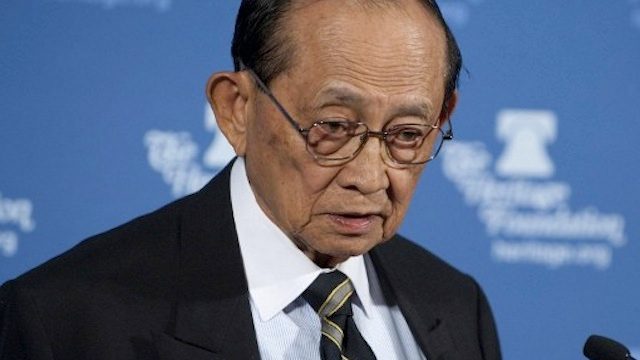
Fidel V. Ramos
- At least two requests to transfer reporters
Ramos may have been the most media-savvy and media-friendly president, but he too had his run-ins with the press.
There were at least two reporters who reportedly angered Ramos so much that he asked his press secretary to seek their removal from the Malacañang beat.
A source privy to the incidents recalled that acting on orders of the President, the press secretary at the time supposedly called up media company owners or editors to request the reassignment of dwIZ radio reporter Jill Resontoc and Manila Standard reporter Joem Macaspac.
Resontoc reportedly piqued the President when he asked the “wrong kind of question” during a live television press conference, according to the source. Macaspac had written a banner story that misquoted the President.
The two were eventually replaced in Malacañang by other reporters from their company.
Requests from government officials for the reassignment of reporters is not uncommon and not unique to the Malacañang beat nor to Ramos.
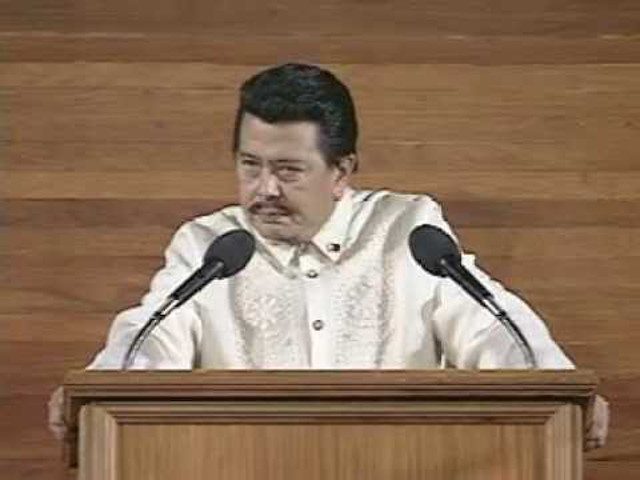
Joseph Estrada
- Inquirer reporters banned from covering some presidential events
Estrada’s beef with the Philippine Daily Inquirer during his administration is well known. Aside from his orchestration of an advertising boycott, the movie star-president restricted access of the two Inquirer reporters covering him at the time – Juliet Javellana and Martin Marfil.
Javellana and Marfil were not allowed to cover Estrada’s informal media chats in his official home, the Premier Guest House, and for a time, even his official events in Malacañang.
Javellana recalled how she found out about Estrada’s order, describing it as “almost comical.”
“One afternoon, while we were writing our stories, Martin and I realized we were the only reporters left in the press office (then at Kalayaan Hall). It turned out the reporters were discreetly called to a merienda-cum-presscon of President Estrada at the Executive House which was his residence during his presidency,” she told Rappler.
Two hours later, the other reporters returned to the press office. Javellana went to then Press Secretary Rodolfo Reyes to ask what had happened.
“He told me the President had asked that the Inquirer be excluded from covering his press conferences and events,” said Javellana.
Asked what stories may have driven Estrada to restrict her access to him, Javellana surmised that it may have been Inquirer’s stories on corruption and nepotism in his administration, including those on the textbook scam involving his supposed distant cousin, Cecilia de Castro.
Since Javellana and Marfil were still allowed inside Malacañang and the press office, they were able to sneak into some of Estrada’s events.
“We tried to cover as much as we can, for as long as we tried to be invisible covering at the back. I took pains not to be seen by the President so that I could still somehow do my job,” she said.
This “hide-and-seek” went on for several months, before Javellana – trying hard not to be noticed during a presidential event in a school basketball court – was called by Estrada to his side.
“He called for me to sit beside him and share the boodle lunch. He picked up a piece of lechon and handed it to me as his peace offering. ‘J,’ he said, ‘We’re okay,’” recalled Javellana.
Javellana then told Estrada, “We’re okay. Nothing personal, just doing our job.”
But Estrada really flexed his muscles against The Manila Times after it published a story of his unwitting involvement in a P17-billion government contract. The outraged president filed a libel suit against the paper.
Feeling the pressure, the Gokongweis, who owned the paper, then issued a front-page apology, prompting the resignation of senior editors and writers. Estrada denied he threatened to raise tax issues against the Gokongwei family’s other businesses. Eventually, the Gokongweis sold The Manila Times to Estrada crony Mark Jimenez.
Another time Estrada got irked by The Manila Times? When they used a photo of him with a fly on his nose on its front page.
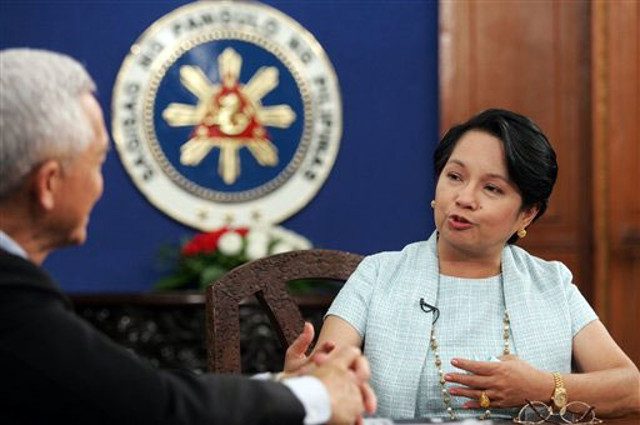
Gloria Macapagal-Arroyo
- Banned non-regular Palace reporters from Malacañang for a few days
- Reporter transferred to another beat
Amid protests by supporters of Gloria Macapagal-Arroyo’s predecessor, Joseph Estrada, Malacañang announced one day that non-regular Malacañang reporters would not be allowed inside the complex for security reasons.
Paolo Romero, one of the reporters affected by the order, recalled that the Presidential Security Group sent a written order to the press working area which clearly listed the names of around 10 reporters.
These reporters were “relievers” or reporters who covered Malacañang only when the regular reporter could not. Relievers were typically in the Palace on weekends. Many of the reporters affected also happened to cover the military or police beat and thus had access to the world of uniformed personnel where dissatisfaction with the new administration was brewing.
Fearing they would not be allowed to enter again if they left the Palace premises, some relievers opted to stay overnight in Malacañang. The ban was in place for one weekend only.
Aside from this short-term prohibition, Arroyo, like Ramos, reportedly made at least one request to a media company for the transfer of its reporter from the Palace beat.
Ferdie Maglalang, who was even the MPC president at the time, was called by his editor at the Manila Bulletin one Friday to tell him that “someone” from Malacañang asked that he be reassigned.
“He, however, didn’t give any other reason. Magpalamig muna daw ako at baka maiba ihip ng hangin (I was told to just cool off first and maybe the direction of the wind would change),” Maglalang told Rappler.
Maglalang said he likely angered someone from the Office of the Press Secretary with his story questioning the qualifications of an OPS employee – who performed mostly clerical duties – who was about to be promoted as press assistant secretary.
He suspected, however, that the official must have had the blessing of someone higher up in Malacañang.
But now, Maglalang suspects it might have also been because of the MPC’s strong opposition back then to plans to transfer the Press Working Area from Kalayaan Hall to the New Executive Building.
The MPC, with Maglalang at its helm, sent Arroyo a letter opposing the location transfer. It was, again, an issue of access. Working from Kalayaan Hall gave reporters better access to Cabinet officials in Malacañang for meetings and to Arroyo herself. NEB, farther and more closed off from the Palace itself, was a less ideal location.
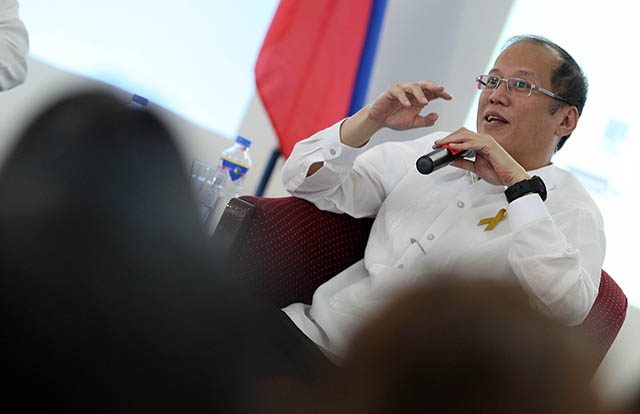
Benigno Aquino III
- Reporter stopped from asking a question
Aquino also ranted against the media in public speeches, though not as often nor as colorfully as his successor. In 2011, Aquino condemned media groups that “sensationalize” instead of write about the truth. A year later, he criticized media for “negative” and “misleading” reporting.
During the anniversary of ABS-CBN news program TV Patrol in 2012, Aquino blasted anchor and former vice president Noli de Castro for expressing “raw opinion and speculation” during the show.
There were also instances when displeasure with a media organization was suspected to have led to some form of restriction.
Rappler reporter Camille Elemia was once stopped by Media Accreditation and Relations Office staff from asking Aquino a question during a press conference. Elemia was already on the list of reporters who were set to ask Aquino questions, when a MARO staff approached her and said she had been ordered to tell Elemia, who was new to the beat, that she was not allowed to ask questions at the news conference.
When Elemia asked, the MARO staff would not say who gave the order. No one at the Presidential Communications Operations Office, which oversees MARO, gave a clear explanation of why this happened. That was the first and only time that Elemia was barred from asking a question at Aquino’s news conference.
There were also suspicions that a television reporter was plucked from the Palace beat for being sympathetic to the previous administration but this was never confirmed.
How they compare to Duterte’s order
A look at all these incidents of Malacañang restricting access of reporters shows that Duterte’s order is the most extreme so far in terms of the following:
Number of reporters covered: Duterte’s prohibition covers not just one or two reporters but an entire news organization, given that Malacañang’s most recent justification for the ban is the Securities and Exchange Commission’s ruling revoking the registration of Rappler as a company, even when this is not yet final and executory.
While under some administrations, specific reporters were taken out of the Palace beat, the media companies could choose not to accommodate the request. Even if they did, they were always allowed to replace the reporter. In Rappler’s case, the ban covers all of its reporters and even its CEO, Maria Ressa.
Areas covered: If past presidents banned only certain reporters from entering some parts of Malacañang, Duterte’s order bans all Rappler reporters from the entire Malacañang complex.
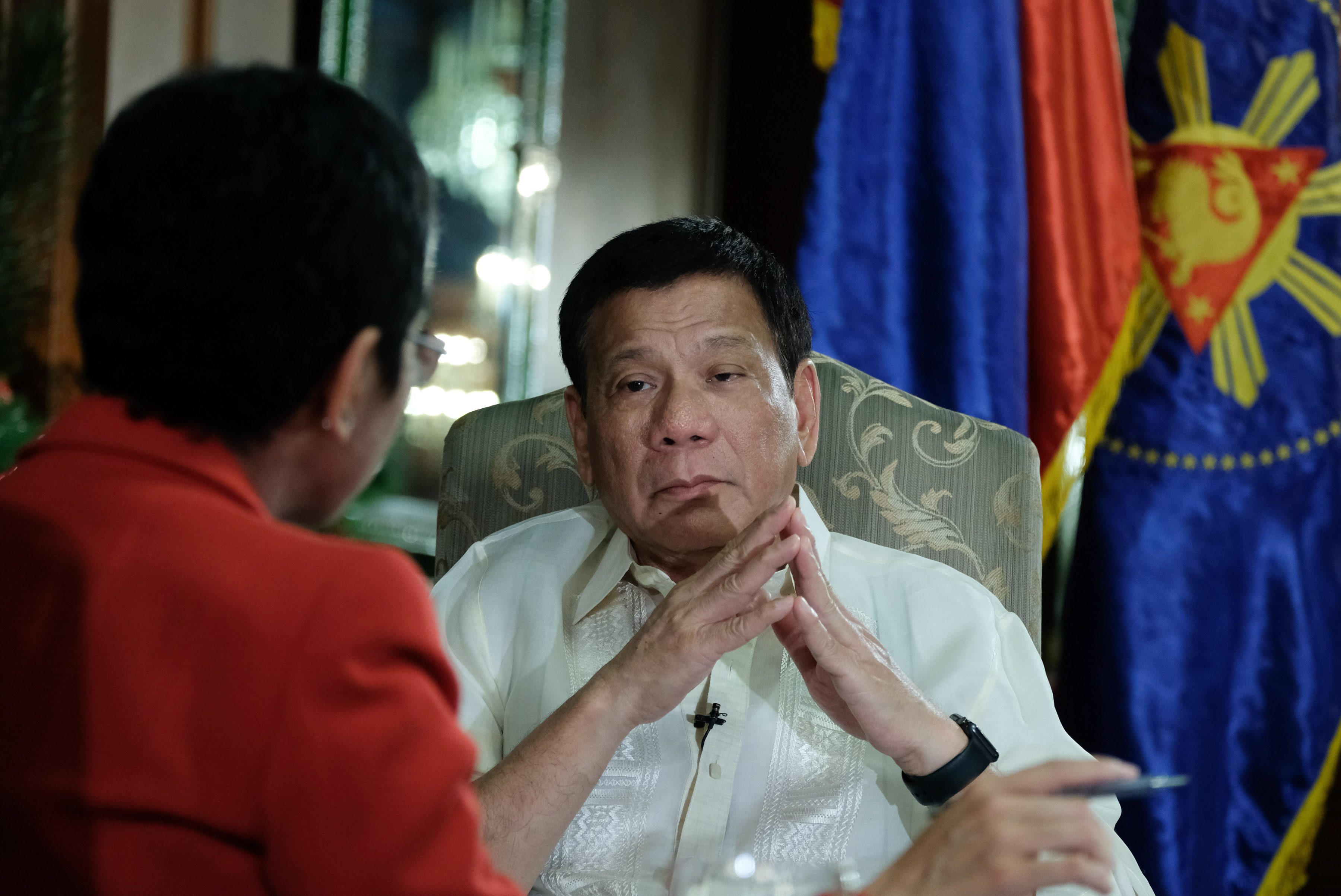
Duterte said his order would be in effect until Rappler is declared “legitimate.” There’s no telling how long this might take or if it could even happen at all. In comparison, restrictions on reporters lasted only a few days or for a specific event. The Estrada ban on Inquirer reporters, however, lasted for several months.
In most cases, restrictions on reporters were verbal orders. The overnight ban on reliever-reporters during Arroyo’s time was the only instance when a written order was presented. Security was the reason cited for the ban, as anti-administration groups mobilized, leading to EDSA 3 or the May 1, 2001, siege.
Estrada’s ban on Inquirer reporters is most similar to Duterte’s ban on Rappler. As Duterte was “bwisit” (annoyed) at Rappler’s reportage on presidential aide Bong Go’s intervention in the Navy’s warships deal, so was Estrada piqued by Inquirer’s stories on him.
And while in some cases during the past administrations, the restriction orders were not officially traced to the sitting president, it was apparent that Duterte and Estrada themselves personally ordered the prohibitions.
Critics, media watchdogs, and rights groups have condemned the Rappler ban as an assault on press freedom.
Javellana feels the same way about Estrada’s order.
“The ban was unfair, selective, unjustified, whimsical and really was abuse of power. After all, we are a democratic country where the right of the people to free expression and a free press is enshrined in the Constitution,” she said.
The run-ins between presidents and Palace reporters show the varying degrees of restriction reporters have had to deal with. Duterte’s ban on Rappler is an escalation, forcing the question: How far can presidents go in cutting media access to presidential coverage?
The presidency is an office imbued with public interest. Malacañang is public property with presidents being mere temporary occupants. Freedom of the press is enshrined in the Constitution. Article 32 of the Civil Code states that any public officer who directly or indirectly obstructs the freedom to write for the press can be made to pay damages.
Barring reporters from covering presidential events affects their ability to write about the event, cover the Palace beat, and ultimately closely watch the highest official of the land. – Rappler.com
Add a comment
How does this make you feel?
There are no comments yet. Add your comment to start the conversation.